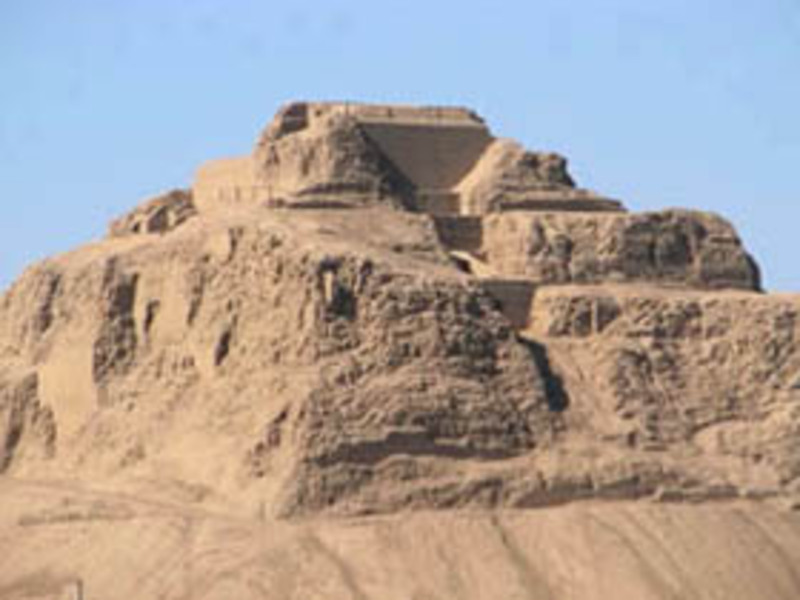Anthropology
Related: About this forumArchaeologists identify 3,200-year-old temple mural of spider god in Peru
Last edited Thu Mar 25, 2021, 11:50 PM - Edit history (1)
Mural discovered last year is thought to depict a zoomorphic, knife-wielding spider god associated with rain and fertility
Sam Jones
@swajones
Thu 25 Mar 2021 10.50 EDT
Archaeologists in northern Peru have identified a 3,200-year-old mural painted on the side of an ancient adobe temple that is thought to depict a zoomorphic, knife-wielding spider god associated with rain and fertility.
The mural – applied in ochre, yellow, grey and white paint to the wall of the 15m x 5m mud brick structure in the Virú province of Peru’s La Libertad region – was discovered last year after much of the site was destroyed by local farmers trying to extend their avocado and sugarcane plantations.
Experts believe the shrine was built by the pre-Columbian Cupisnique culture, which developed along Peru’s northern coast more than 3,000 years ago.
The archaeologist Régulo Franco Jordán said the shrine’s strategic location near the river had led researchers to believe it had been a temple dedicated to water deities.
More:
https://www.theguardian.com/world/2021/mar/25/peru-archaeologists-mural-temple-spider-god-rain-fertility#:~:text=Archaeologists%20in%20northern%20Peru%20have,associated%20with%20rain%20and%20fertility.



Karadeniz
(22,511 posts)Martin68
(22,794 posts)Judi Lynn
(160,524 posts)I did go to look for a better look at the subject, and it doesn't appear there are better images anywhere else, yet. They should appear as more people investigate it. The Guardian's view of the mural was really faded, due to the materials used on the crumbly surface, and weathering in the hot sun, and age.
Again, sorry. I drifted away, forgot to come back! Thank you.
Judi Lynn
(160,524 posts)Archaeologists have discovered a mural depicting the spider god of the pre-Hispanic Cupisnique culture in the Lambayeque region of northern Peru. The mural was applied to the mud brick wall 50 feet wide 16 feet of a sacred structure. It was painted in ochre, yellow, grey against a white background. It’s hard to make out now that so much of it is lost, but the yellow zig-zag bits are the legs of the spider god. The vertical ochre stripe down the middle of the legs is the abdomen. The ochre gum-drop shape surrounded by a yellow boundary and topped by a blue rectangle is interpreted as the hilt of a knife or dagger.
The spider god was associated with rainfall, fertility and hunting. Archaeologist Régulo Franco Jordán hypothesizes that this temple, which was built close to the river, was dedicated to water deities.
“The spider on the shrine is associated with water and was an incredibly important animal in pre-Hispanic cultures, which lived according to a ceremonial calendar. It’s likely that there was a special, sacred water ceremony held between January and March when the rains came down from the higher areas.”
The Cupisnique occupied the northern coast of Peru between around 2000 and 500 B.C., and several of their adobe temples have been discovered in Lambayeque. Unfortunately callous agricultural expansion has taken an enormous toll on the region’s irreplaceable cultural heritage. The Early Cupisnique brick temple at Ventarrón was consumed in a fire https://www.cnn.com/2017/11/13/americas/ancient-peruvian-mural-destroyed-in-fire/index.html set by farmers burning their sugar cane fields. Its murals, radiocarbon dated to 2000 B.C., the oldest absolutely dated mural art in the Americas, were completely destroyed.
The recently-discovered huaca, dubbed Tomabalito, also suffered extensive damage when neighboring farmers attempted to expand their avocado and sugar cane cultivation. Using earthmovers, they leveled an estimated 60% of the ancient temple complex. The existence of the temple only came to light in November 2020, when Régulo Franco Jordán, discoverer of the Lady of Cao burial, was informed of the appearance of monumental mural. He inspected the find himself, and identified it as a Cupisnique construction based on the characteristic conical adobe used to make the wall. He believes it’s about 3,200 years old.
Jordán reported the discovery to regional cultural heritage authorities who initiated an emergency archaeological intervention. The aim for now is to conserve what’s left of the mural and of the site. While archaeologists are investigating, authorities have applied for the area to be declared a protected site. They have also filed a complaint against the people who bulldozed the site.
http://www.thehistoryblog.com/archives/61044
